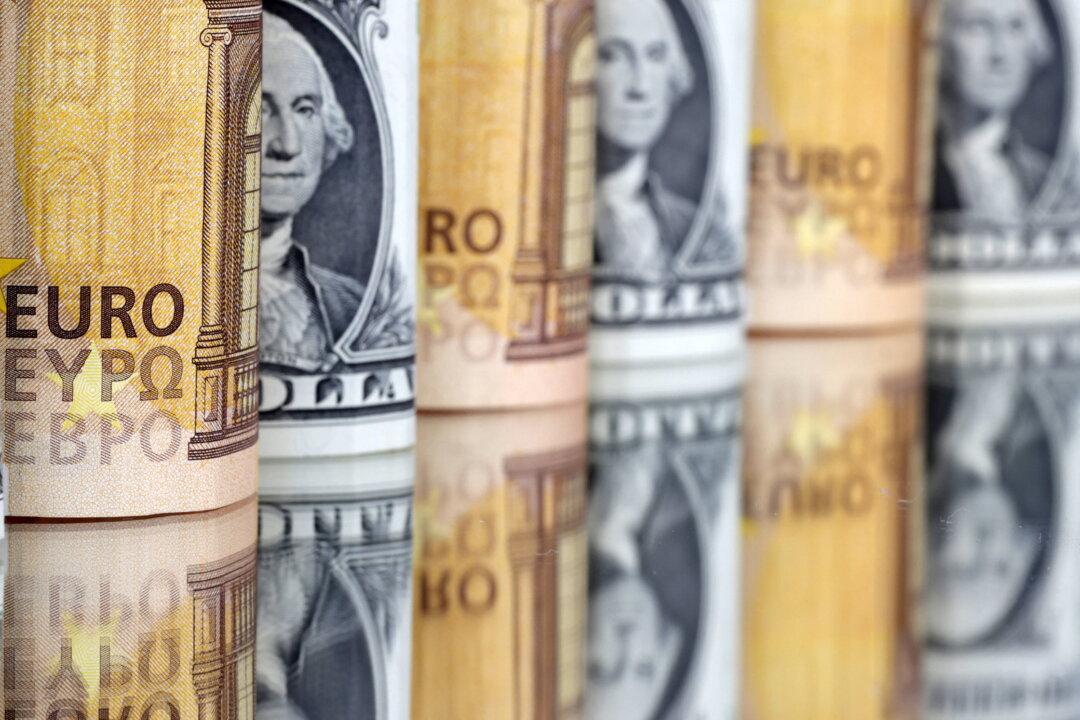LONDON—The euro briefly fell back below parity against a robust dollar on Monday and was languishing at five-week lows, weighed down by concern that a three-day halt to European gas supplies later this month will exacerbate an energy crisis.
China’s yuan dropped to its lowest in nearly two years after the central bank cut key lending rates.





